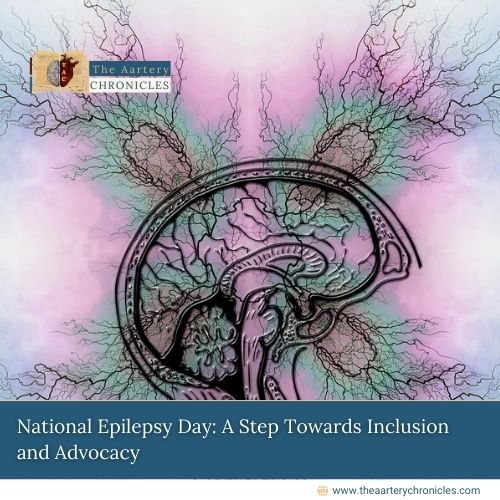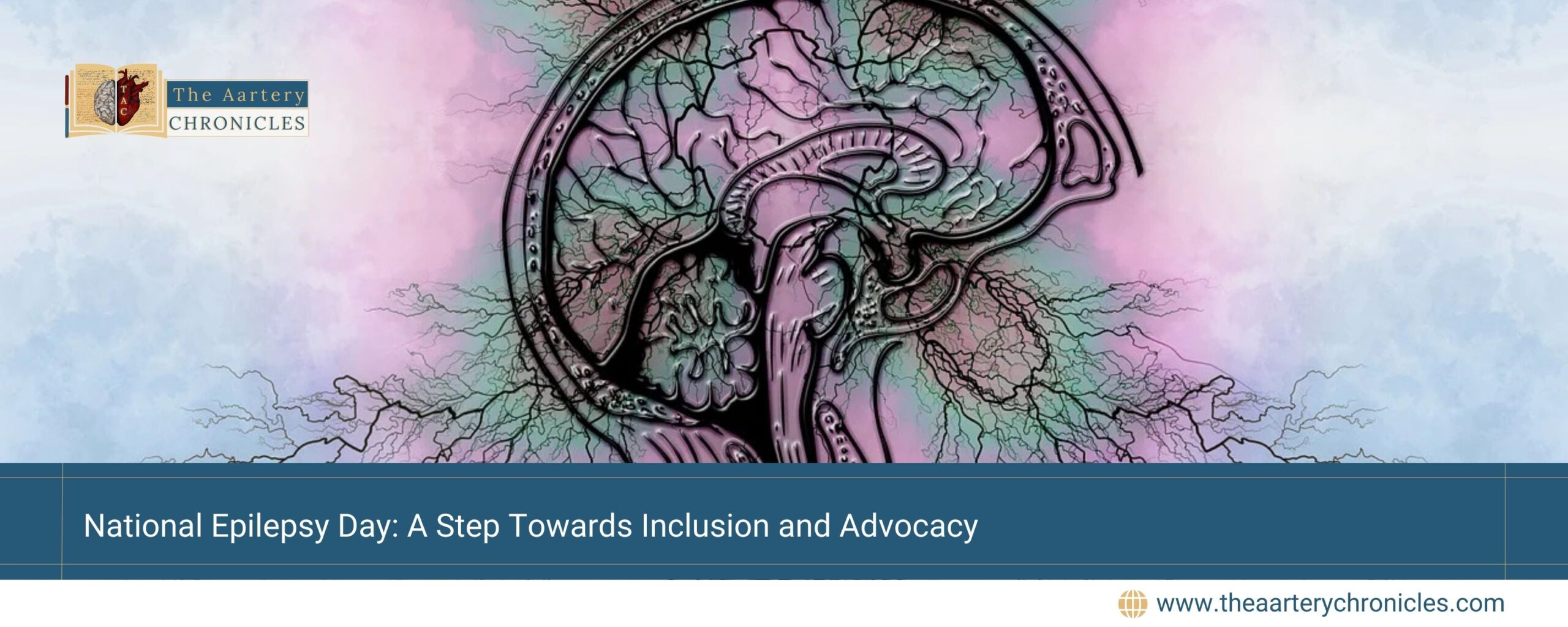

National Epilepsy Day: A Step Towards Inclusion and Advocacy
Introduction
National Epilepsy Day is observed annually on 17th November in India to highlight the importance of epilepsy, a chronic neurological disorder marked by recurrent seizures and fits. This day serves as a platform to educate the public about the challenges faced by individuals living with epilepsy, reduce the stigma associated with the condition, and highlight the critical need for timely intervention.
What is Epilepsy?
Epilepsy is a neurological disorder that is caused by abnormal electrical activity in the brain, leading to intermittent episodes of seizures or “fits.” These seizures vary in intensity and presentation, ranging from brief moments of confusion or muscle jerks to prolonged convulsions and complete loss of consciousness
Causes of Epilepsy?
In about 70% of cases, the cause of epilepsy remains unknown, while the remaining 30% can be attributed to specific factors such as:
- Genetic factors
- Head trauma or brain injuries
- Brain infections like meningitis or encephalitis
- Autoimmune disorders
- Mesial temporal sclerosis
- Birth abnormalities such as polymicrogyria and tuberculous sclerosis
- Brain conditions such as stroke, brain tumours, and dementia
Epilepsy can occur at any age, though it is more commonly diagnosed in childhood or among older adults.
Symptoms of Epilepsy
Recurrent seizures are the main symptom of epilepsy, and these symptoms can vary widely depending on the type of seizure.
Physical Symptoms
- Temporary loss of awareness or consciousness
- Uncontrolled muscle movements such as jerking, twitching, or convulsions
- Sudden loss of muscular tone, causing falls or collapse.
- Lip-smacking, chewing motions, rubbing hands, or repetitive finger movements
Cognitive and Behavioural Symptoms
- Blank stare or “staring into space” look
- Temporary confusion or slowed thinking
- Difficulty with speech, like problems in talking or understanding others
Sensory Changes
- Altered hearing, vision, taste, or smell
- Feelings of numbness or tingling in certain parts of the body
- Upset stomach or sensations of waves of heat or cold, sometimes accompanied by goosebumps
History of National Epilepsy Day
National Epilepsy Day, observed annually on November 17th, was initiated by the Epilepsy Foundation of India, founded by Dr. Nirmal Surya in 2009. These non-profit aims to improve the lives of those with epilepsy and combat societal stigma. The initiative aims to raise awareness, reduce stigma, and ensure access to care and support for those living with the condition.
Global and National Burden of Epilepsy
The World Health Organization (WHO) estimates that approximately 50 million people are afflicted by epilepsy globally. Alarmingly, 80% of these individuals live in low- and middle-income countries, where access to adequate healthcare and treatment remains a significant challenge. With timely diagnosis and treatment, up to 70% of individuals with epilepsy can lead a seizure-free life.
Out of the 70 million people living with epilepsy (PWE) globally, approximately 12 million are believed to reside in India, making up nearly one-sixth of the global epilepsy burden. This highlights the urgent need for improved awareness, healthcare infrastructure, and community support to bridge the treatment gap and enhance the lives of those living with epilepsy.
Significance of National Epilepsy Day 2024
Epilepsy is more than a neurological disorder; it impacts every facet of a person’s life, from education and employment to mental health and relationships. The stigma and misconceptions surrounding epilepsy often lead to isolation and discrimination, thus making awareness initiatives vital.
National Epilepsy Day aims to foster a deeper understanding of epilepsy by educating the public, reducing stigma, and promoting empathy for those affected. It highlights the importance of early diagnosis, encouraging individuals to recognize the symptoms and seek timely treatment, which can significantly improve outcomes. The day also emphasizes the need for comprehensive care, advocating for access to affordable and inclusive healthcare to ensure effective management of the condition. Additionally, it acknowledges the vital role of families and caregivers, providing them with the resources and support needed to navigate their journey and enhance the quality of life for those they care for.
Challenges Faced by People with Epilepsy
Epilepsy’s impact extends beyond health, affecting education, employment, and social relationships. Common challenges include:
- Stigma and discrimination: Misconceptions about epilepsy often lead to isolation and exclusion.
- Limited access to care: In low-income countries, approximately 75% of individuals with epilepsy experience a significant treatment gap. Additionally, in many middle- and low-income nations, the availability of antiseizure medications is limited to less than 50% of the population, further hindering access to effective care for those affected.
- Emotional well-being: Anxiety and depression frequently co-exist with epilepsy due to its unpredictable nature.
Prevention of Epilepsy
According to WHO, approximately one quarter of epilepsy cases are potentially preventable through effective interventions and lifestyle measures.
Strategies for Prevention:
- Preventing Head Injuries:
- Reducing the risk of falls, traffic accidents, and sports injuries is the most effective way to prevent post-traumatic epilepsy.
- Promoting the use of helmets, seat belts, and road safety measures can significantly lower head injury-related epilepsy cases.
- Ensuring Adequate Perinatal Care:
- Proper prenatal and perinatal care can help prevent epilepsy caused by birth-related injuries.
- This includes skilled delivery assistance and management of complications during childbirth.
- Managing Febrile Seizures:
- Using medications and other methods to control body temperature in feverish children can reduce the risk of febrile seizures.
- Reducing Stroke-Related Epilepsy:
Preventing epilepsy linked to strokes involves addressing cardiovascular risk factors, such as:
- Controlling high blood pressure, diabetes, and obesity.
- Avoiding tobacco and excessive alcohol consumption.
- Preventing Central Nervous System Infections:
- In tropical regions, CNS infections are a significant cause of epilepsy, especially in low- and middle-income countries.
- Efforts to eliminate parasites, such as those causing neurocysticercosis, and educating communities about infection prevention can help reduce these cases.
By implementing these preventive measures, the risk of developing epilepsy can be significantly reduced, improving health outcomes and quality of life for millions globally.
What Can You Do?
- Spread awareness: Use social media and community platforms to share facts about epilepsy.
- Learn seizure first aid: Know how to assist someone during a seizure safely.
- Support organizations: Contribute to groups working towards epilepsy research and advocacy.
Conclusion
National Epilepsy Day is an opportunity to stand in solidarity with those living with epilepsy. By breaking barriers and building inclusive environments, we can empower individuals to lead fulfilling lives without fear or prejudice.









